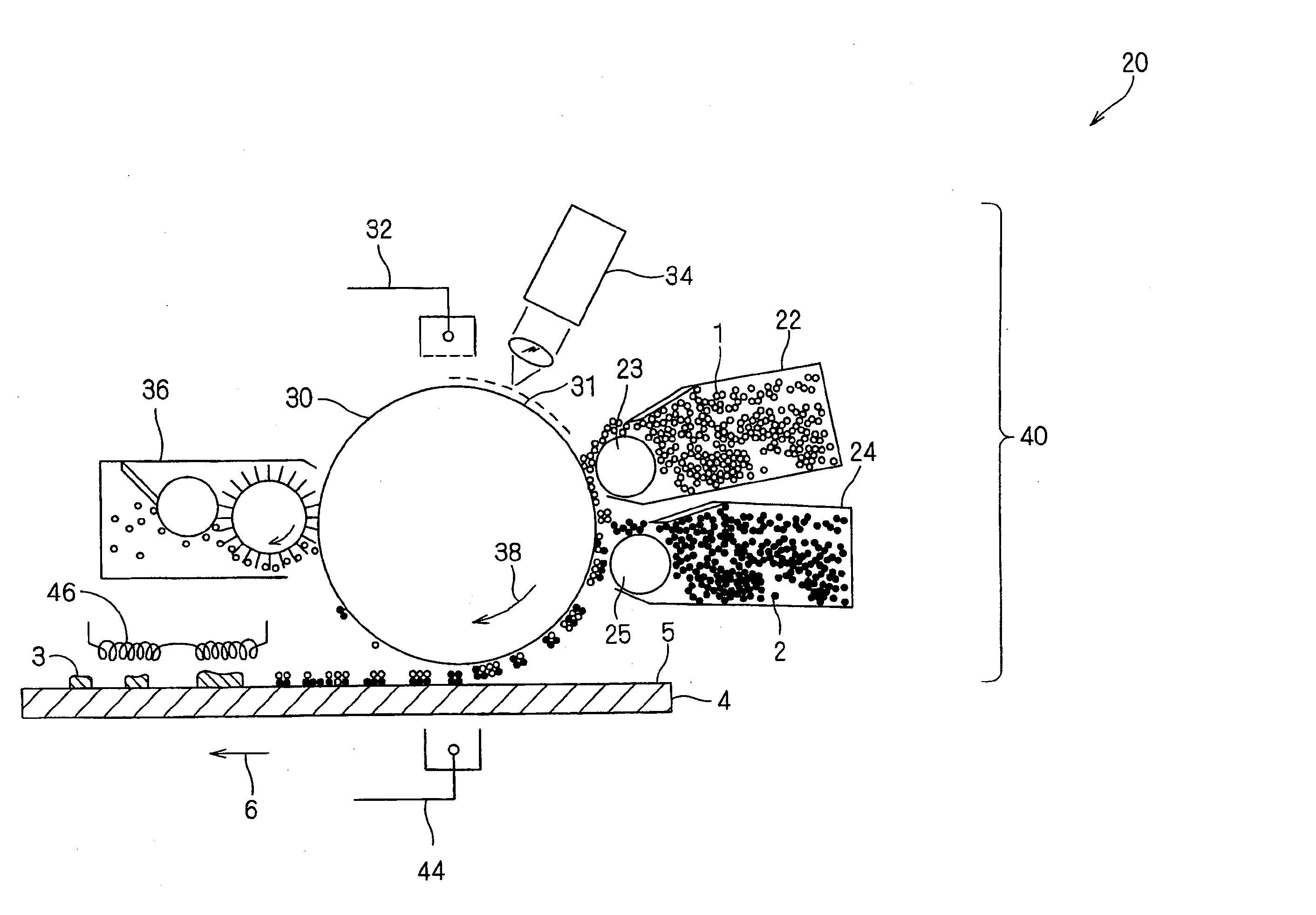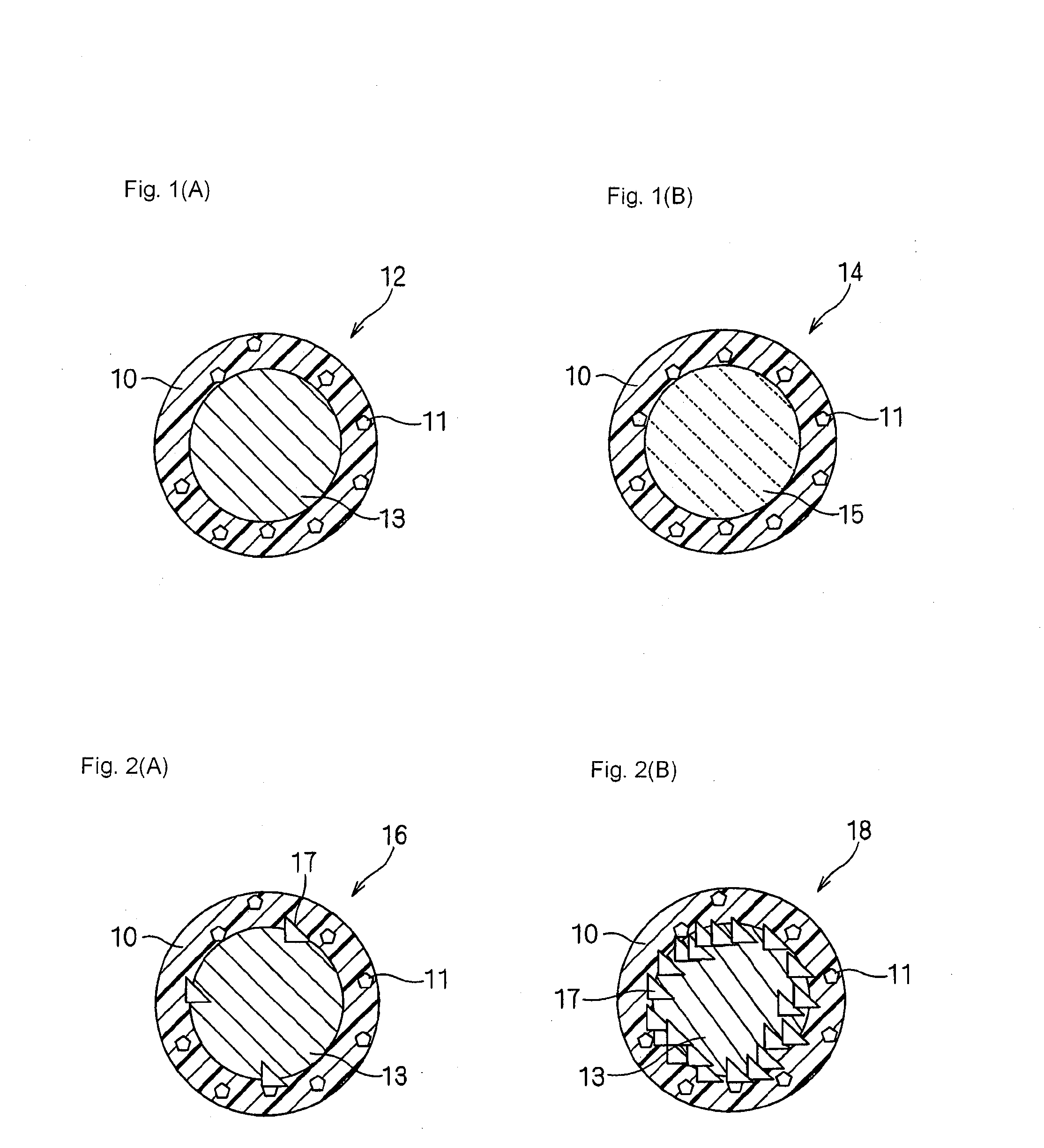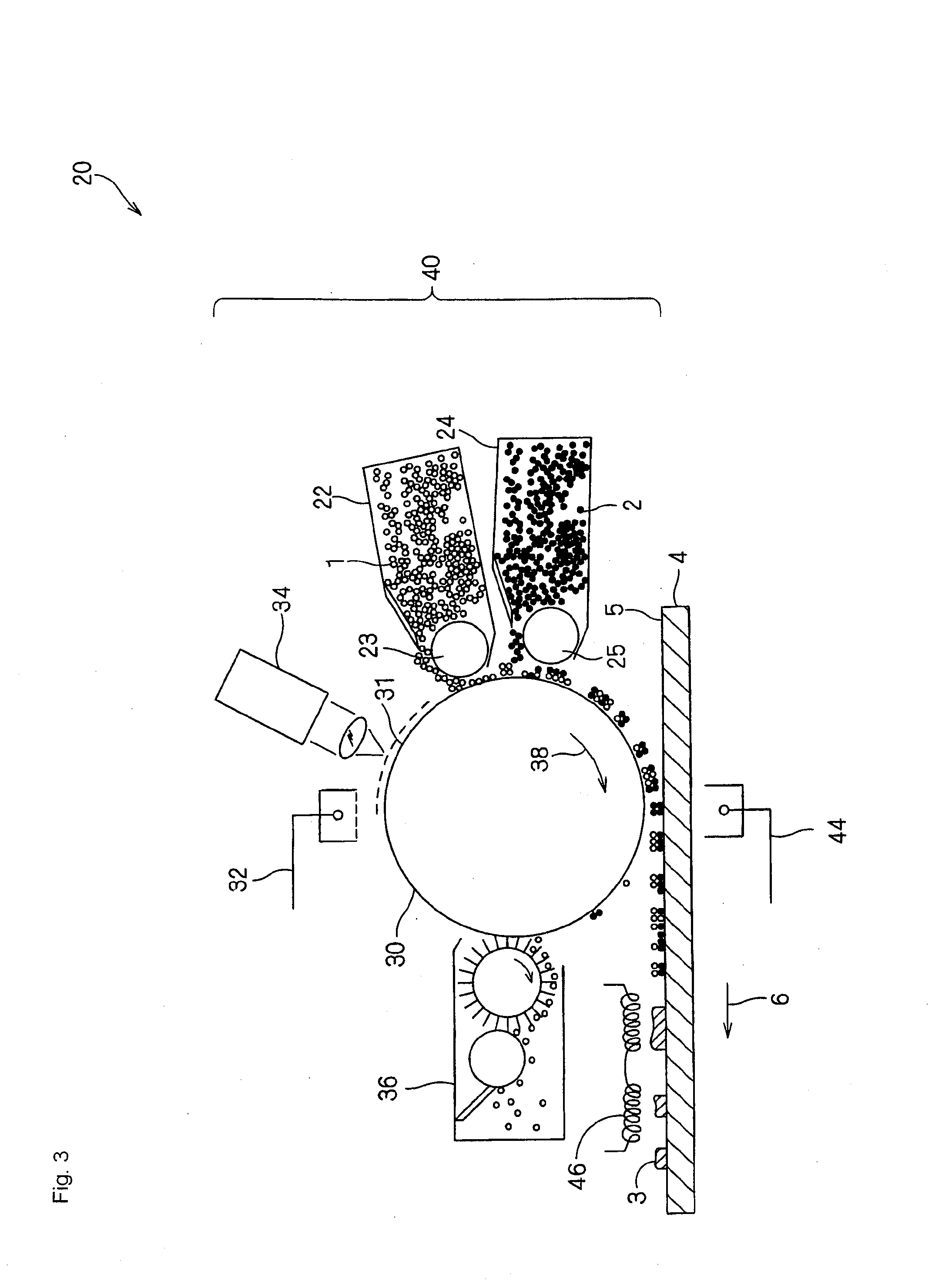Method for forming circuit pattern
a circuit pattern and pattern technology, applied in the field of circuit pattern formation, can solve the problems of complex inventory management, considerable management costs, and extremely difficult to alter the resistance of the resistance pattern, and achieve the effect of solving additional problems that still remain to be solved
- Summary
- Abstract
- Description
- Claims
- Application Information
AI Technical Summary
Benefits of technology
Problems solved by technology
Method used
Image
Examples
embodiment 1-1
[0094]As examples of toner that have different resistances for use in the formation of a resistance pattern, FIGS. 1(A) and 1(B) schematically illustrate conductor toner 12 and glass toner 14.
[0095]As illustrated in FIG. 1(A), in the conductor toner 12, a resistor particle 13 formed of a resistive material, such as ruthenium oxide, is coated with a resin layer 10, which contains a charge control agent 11.
[0096]The conductor toner 12 may be produced as follows. First, a ruthenium oxide powder having an average particle size of 6.1 μm, a styrene acrylic resin, and an azo charge control agent are mixed in a hybridization system (Nara Machinery Co., Ltd.) at a weight ratio of 90:9.9:0.1 to produce conductor toner 12 having an average particle size of 7.3 μm. The conductor toner 12 and a ferrite carrier having an average particle size of 60 μm are mixed at a weight ratio of 20:80 to produce a developer that contains the conductor toner 12 and the ferrite carrier.
[0097]As illustrated in F...
embodiment 1-2
[0099]As other types of toner that have different resistances for use in the formation of a resistance pattern, FIGS. 2(A) and 2(B) schematically illustrate low-resistance toner 16 having a relatively low resistance and high-resistance toner 18 having a relatively high resistance, respectively.
[0100]As illustrated in FIG. 2(A), in the low-resistance toner 16, a resistor particle 13 formed of a resistive material, such as ruthenium oxide, contains glass frit 17 embedded in the surface thereof, and is coated with a resin layer 10, which contains a charge control agent 11.
[0101]The low-resistance toner 16 may be produced as follows. B2O3, SiO2, BaO, CaO, and Al2O3 are prepared as raw materials of irreducible borosilicate glass frit. These materials are mixed at a molar ratio of 36.0:31.7:18.0:9.3:5.0. The mixture is melted at a temperature in the range of 1200° C. to 1350° C. and is then quenched in pure water. The quenched mixture is pulverized with a vibrating mill into irreducible g...
embodiment 2-1
[0106]FIG. 3 schematically illustrates the structure of a single-drum-type electrophotographic apparatus 20.
[0107]The electrophotographic apparatus 20 includes an electrophotography engine unit 40, a transfer apparatus 44, and a fixing apparatus 46.
[0108]The electrophotography engine unit 40 includes a charger 32, an exposure apparatus 34, a first developing unit 22, a second developing unit 24, and a cleaner 36 each disposed around a drum-type photoreceptor 30. The charger 32 electrifies the surface 31 of the photoreceptor 30. For example, the charger 32 may be a corona charger. The exposure apparatus 34 irradiates the surface 31 of the photoreceptor 30 with light to form a desired latent image pattern (not shown). The first developing unit 22 supplies first toner 1 containing a resistive material onto the latent image pattern formed on the photoreceptor 30 to develop a first toner image. The second developing unit 24 supplies second toner 2 containing a resistive material onto the...
PUM
| Property | Measurement | Unit |
|---|---|---|
| particle size | aaaaa | aaaaa |
| particle size | aaaaa | aaaaa |
| weight ratio | aaaaa | aaaaa |
Abstract
Description
Claims
Application Information
 Login to View More
Login to View More - R&D
- Intellectual Property
- Life Sciences
- Materials
- Tech Scout
- Unparalleled Data Quality
- Higher Quality Content
- 60% Fewer Hallucinations
Browse by: Latest US Patents, China's latest patents, Technical Efficacy Thesaurus, Application Domain, Technology Topic, Popular Technical Reports.
© 2025 PatSnap. All rights reserved.Legal|Privacy policy|Modern Slavery Act Transparency Statement|Sitemap|About US| Contact US: help@patsnap.com



